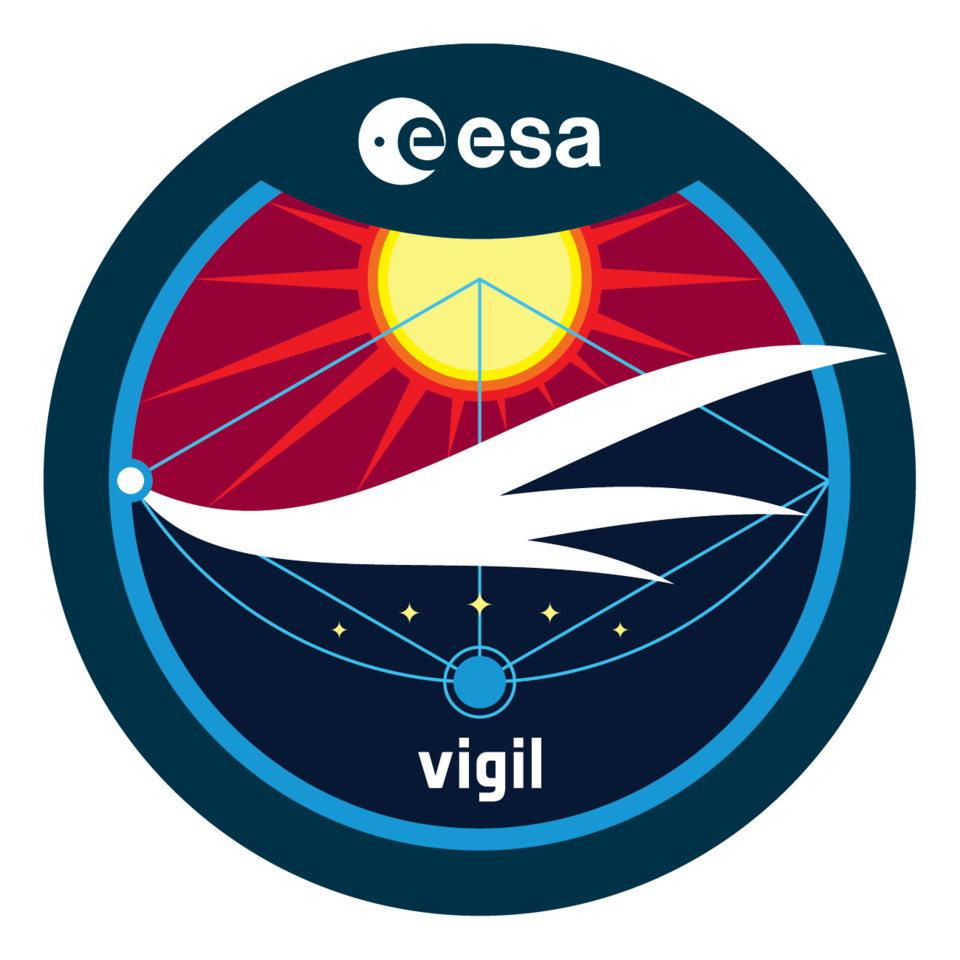 I am the Science Lead for the Plasma Analyser (PLA) instrument on board ESA’s Vigil mission. Vigil is an operational space-weather mission to monitor the sources and effects of space weather from the fifth Lagrange point of the Sun-Earth system. From this new vantage point, Vigil will detect fast solar-wind streams more than four days before they point towards the Earth. In addition, Vigil’s remote-sensing payload will provide advance observations of the source regions of space weather: the Sun’s surface and atmosphere (corona). PLA is currently being built by UCL/MSSL. It will provide continuous and fast measurements of the proton density, speed, and temperature at the fifth Lagrange point. Vigil is planned to launch at the end of this decade.
I am the Science Lead for the Plasma Analyser (PLA) instrument on board ESA’s Vigil mission. Vigil is an operational space-weather mission to monitor the sources and effects of space weather from the fifth Lagrange point of the Sun-Earth system. From this new vantage point, Vigil will detect fast solar-wind streams more than four days before they point towards the Earth. In addition, Vigil’s remote-sensing payload will provide advance observations of the source regions of space weather: the Sun’s surface and atmosphere (corona). PLA is currently being built by UCL/MSSL. It will provide continuous and fast measurements of the proton density, speed, and temperature at the fifth Lagrange point. Vigil is planned to launch at the end of this decade.
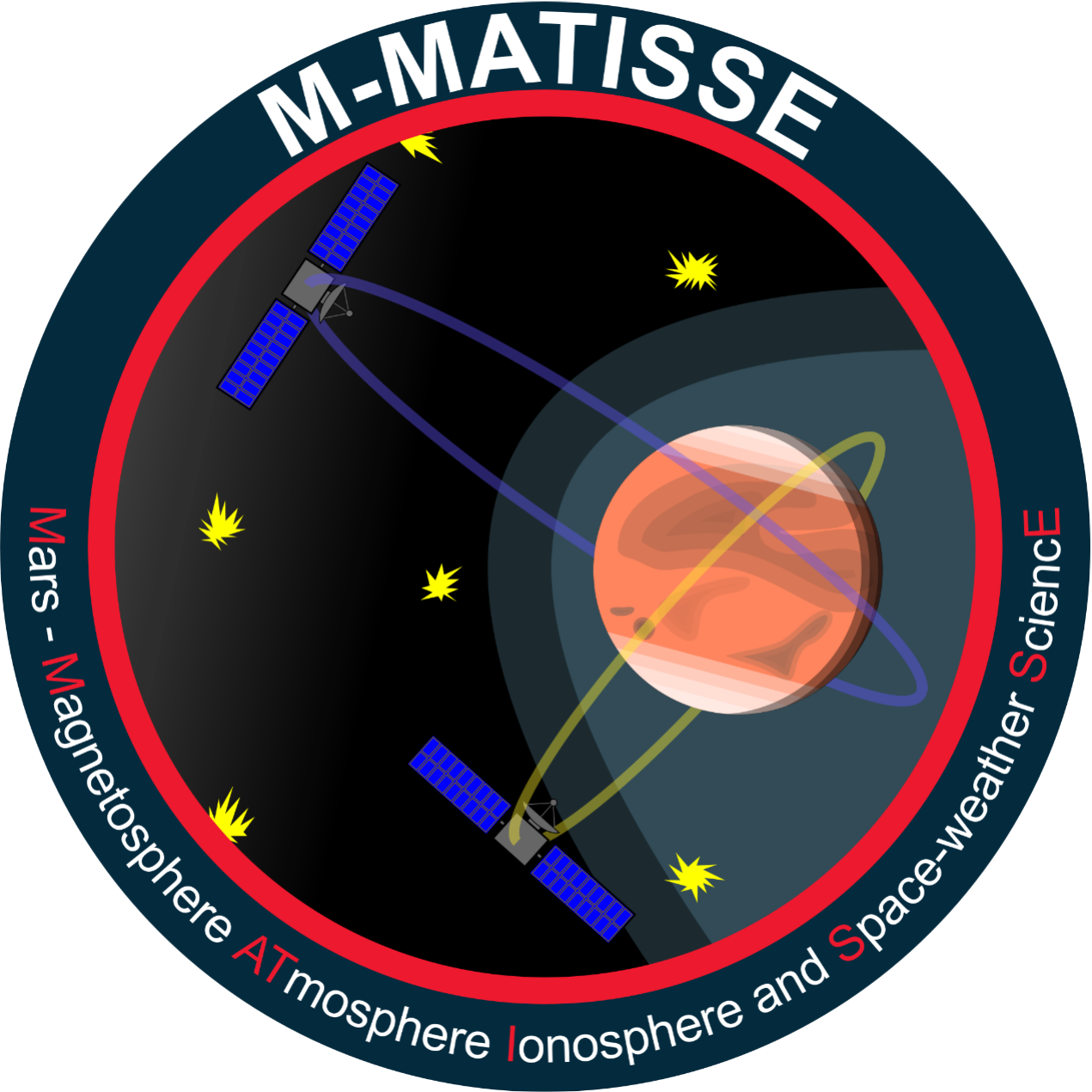 I am the Principal Investigator (PI) of the Mars – Electron Analyser System (M-EAS). This instrument is part of the Mars – Ensemble of Particle Instruments (M-EPI) suite of the M-MATISSE mission. M-MATISSE stands for “Mars – Magnetosphere Atmosphere Ionosphere and Space-weather Science”. It is a two-spacecraft mission that is currently under study in Phase A as a candidate for ESA’s M7 mission selection. M-MATISSE will study space weather at Mars and thus prepare for the safety of our future robotic and human exploration of the red planet. M-EAS will measure electrons from the solar wind and photo-electrons that come from the planet’s ionosphere. In addition, M-EAS will detect negative ions that will help us understand the interactions between Mars and its cosmic neighbourhood. The M-EAS sensor builds on heritage from Solar Orbiter’s SWA/EAS sensor and is currently studied and developed by UCL/MSSL. M-EAS will provide measurements of the electron distribution function across a very wide field of view on both spacecraft of the M-MATISSE mission.
I am the Principal Investigator (PI) of the Mars – Electron Analyser System (M-EAS). This instrument is part of the Mars – Ensemble of Particle Instruments (M-EPI) suite of the M-MATISSE mission. M-MATISSE stands for “Mars – Magnetosphere Atmosphere Ionosphere and Space-weather Science”. It is a two-spacecraft mission that is currently under study in Phase A as a candidate for ESA’s M7 mission selection. M-MATISSE will study space weather at Mars and thus prepare for the safety of our future robotic and human exploration of the red planet. M-EAS will measure electrons from the solar wind and photo-electrons that come from the planet’s ionosphere. In addition, M-EAS will detect negative ions that will help us understand the interactions between Mars and its cosmic neighbourhood. The M-EAS sensor builds on heritage from Solar Orbiter’s SWA/EAS sensor and is currently studied and developed by UCL/MSSL. M-EAS will provide measurements of the electron distribution function across a very wide field of view on both spacecraft of the M-MATISSE mission.
 I am a Co-Investigator for the Solar Wind Plasma Analyser (SWA) instrument on board ESA’s Solar Orbiter spacecraft. Solar Orbiter launched in February 2020 and explores the inner heliosphere and its connection with the Sun in great detail. The SWA instrument suite measures the in-situ properties of protons, electrons, alpha particles, and heavy ions with unprecedented resolution and quality. Here is some of the media coverage that the launch of Solar Orbiter generated with my involvement:
I am a Co-Investigator for the Solar Wind Plasma Analyser (SWA) instrument on board ESA’s Solar Orbiter spacecraft. Solar Orbiter launched in February 2020 and explores the inner heliosphere and its connection with the Sun in great detail. The SWA instrument suite measures the in-situ properties of protons, electrons, alpha particles, and heavy ions with unprecedented resolution and quality. Here is some of the media coverage that the launch of Solar Orbiter generated with my involvement:
- wired.com: Europe’s Solar Orbiter Begins Its Journey to the Sun
- El Periódico: Una sonda se prepara para observar los polos del Sol
- Auf Distanz Podcast: Solar Orbiter (in German)
- RTL Hessen: Reise zur Sonne: ESA-Raumsonde “Solar Orbiter” gestartet (in German)
- The Register: Forget the Oscars, the Solar Orbiter is off to take a close look at our nearest (and super-hot) star
- Astrozwerge: Das war unser #SolarOrbiter Start (in German)
- Force Thirteen at Solar Orbiter Launch Week
- hr info, Radio-Interview: Unser rätselhafter Heimatstern – Neue Raumsonden erforschen die Sonne (in German)
- ESA Highlights 2020

 I have written a News & Views feature article “A step closer to the Sun’s secrets” for Nature about the first results from the Parker Solar Probe. This mission was launched in the summer of 2018 and has now reached the inner parts of the solar system. No spacecraft has explored these regions before. The initial results are promising and show that the solar wind is more structured than previously expected and that the amplitude of fluctuations is greater near the Sun. You can read my Nature article and the related research articles here. There is even a Japanese version of my article. I have also written a summary piece for The Conversation and was interviewed about the Parker Solar Probe results by the Cosmos Magazine and the New York Times. Another summary article can be found on space.com.
I have written a News & Views feature article “A step closer to the Sun’s secrets” for Nature about the first results from the Parker Solar Probe. This mission was launched in the summer of 2018 and has now reached the inner parts of the solar system. No spacecraft has explored these regions before. The initial results are promising and show that the solar wind is more structured than previously expected and that the amplitude of fluctuations is greater near the Sun. You can read my Nature article and the related research articles here. There is even a Japanese version of my article. I have also written a summary piece for The Conversation and was interviewed about the Parker Solar Probe results by the Cosmos Magazine and the New York Times. Another summary article can be found on space.com.
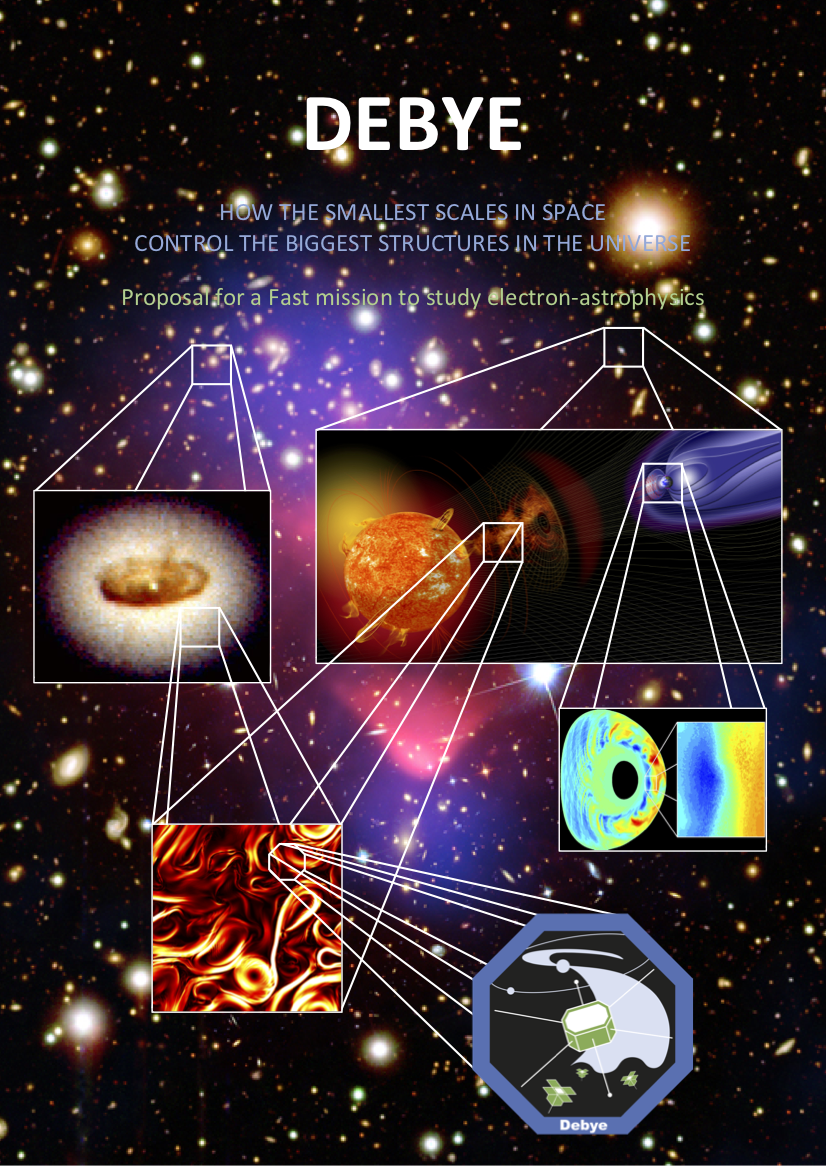 I am the Mission Co-PI Science for the Debye mission proposal. If selected, Debye will answer the science question “How are electrons heated in astrophysical plasmas?”. It will consist of one main spacecraft that measures electrons with very high cadence and resolution, electric fields, magnetic fields, and protons. Then it will have one or more smaller deployable spacecraft that measure high-frequency fluctuations in the electric and magnetic fields.
I am the Mission Co-PI Science for the Debye mission proposal. If selected, Debye will answer the science question “How are electrons heated in astrophysical plasmas?”. It will consist of one main spacecraft that measures electrons with very high cadence and resolution, electric fields, magnetic fields, and protons. Then it will have one or more smaller deployable spacecraft that measure high-frequency fluctuations in the electric and magnetic fields. 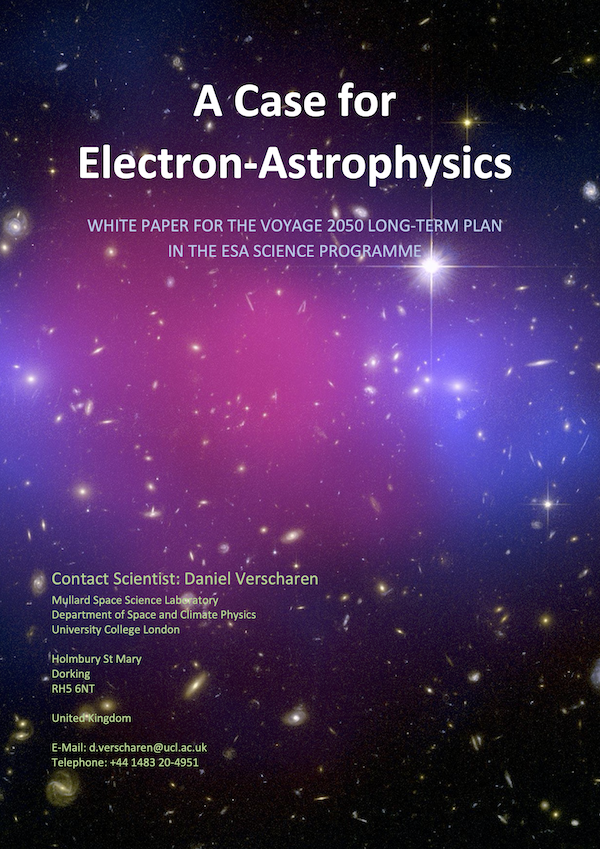 The spacecraft separation will vary from a few hundred metres to a few tens of kilometres during the mission lifetime. In this way, Debye will study the thermodynamics of electrons on small plasma scales in the solar wind. The major challenge for these measurements lies in the requirement to count electrons very rapidly in order to resolve electron-scale structures in the particle distribution. Debye also features in my AGU Narratives podcast interview for the American Geophysical Union’s centennial and the Space Mission Special on BBC Four’s Sky at Night programme.
The spacecraft separation will vary from a few hundred metres to a few tens of kilometres during the mission lifetime. In this way, Debye will study the thermodynamics of electrons on small plasma scales in the solar wind. The major challenge for these measurements lies in the requirement to count electrons very rapidly in order to resolve electron-scale structures in the particle distribution. Debye also features in my AGU Narratives podcast interview for the American Geophysical Union’s centennial and the Space Mission Special on BBC Four’s Sky at Night programme.
In relation to our Debye mission proposal, we have submitted the White Paper “A Case for Electron-Astrophysics” to ESA’s Voyage 2050 programme. In this White Paper, we argue for the importance of electron-scale physics to understand the global plasma evolution in the solar wind and throughout the Universe.
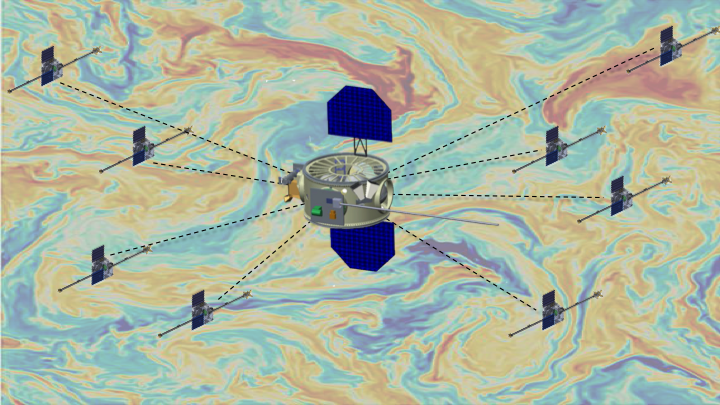 I’m a member of the Theory Working Group for the NASA mission HelioSwarm. This mission was selected by NASA in February 2022. As a swarm of nine spacecraft, HelioSwarm will measure the turbulence in the solar wind. Using multiple measurement points, this mission will give us novel simultaneous measurements of different scales of the turbulent fluctuations. HelioSwarm is a MIDEX mission planned to launch in 2028.
I’m a member of the Theory Working Group for the NASA mission HelioSwarm. This mission was selected by NASA in February 2022. As a swarm of nine spacecraft, HelioSwarm will measure the turbulence in the solar wind. Using multiple measurement points, this mission will give us novel simultaneous measurements of different scales of the turbulent fluctuations. HelioSwarm is a MIDEX mission planned to launch in 2028.
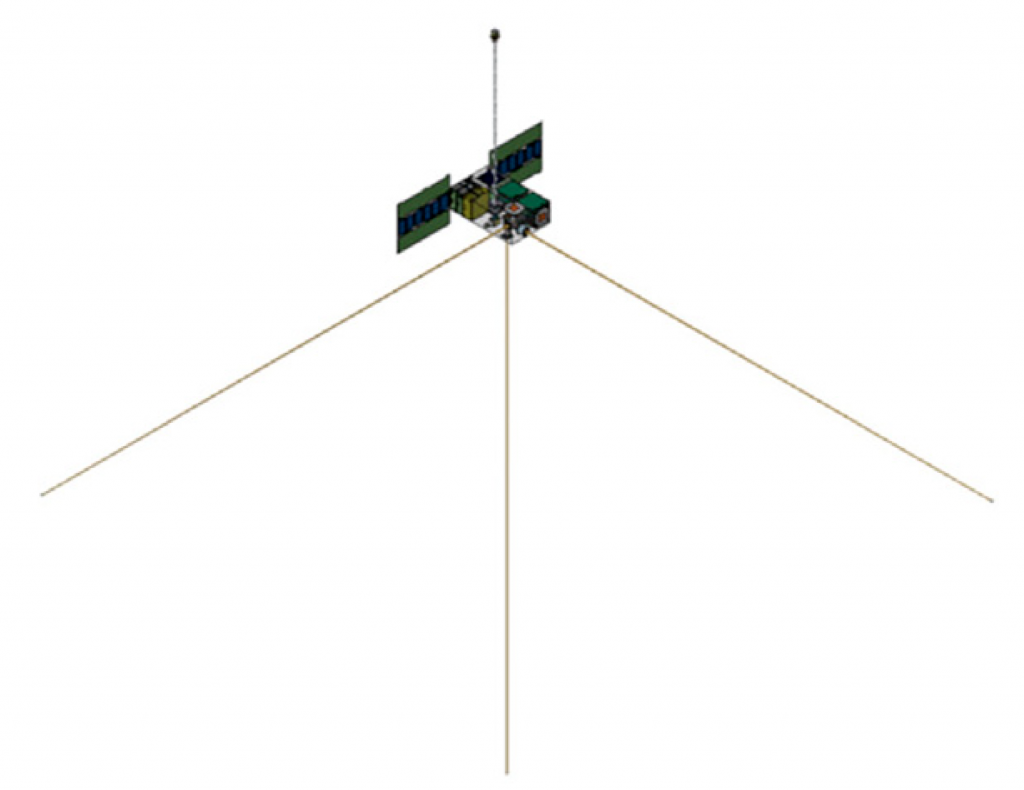 I’m a member of the science teams for the new mission concepts MagneToRE and InterMeso. MagneToRE is the “Magnetic Topology Reconstruction Explorer”, a constellation of more than 20 small satellites that will measure structures in the meso-scale interplanetary magnetic field. This mission will create the first images of the magnetic field in space.
I’m a member of the science teams for the new mission concepts MagneToRE and InterMeso. MagneToRE is the “Magnetic Topology Reconstruction Explorer”, a constellation of more than 20 small satellites that will measure structures in the meso-scale interplanetary magnetic field. This mission will create the first images of the magnetic field in space.
InterMeso, formally known as HelioDISC, is the “Interplanetary Mesoscale Observatory”. This mission consists of four spacecraft that will slowly increase their separation over time. This will allow us to measure meso-scale and large-scale structures in the solar wind, including coronal mass ejections and their impact on energetic particles.